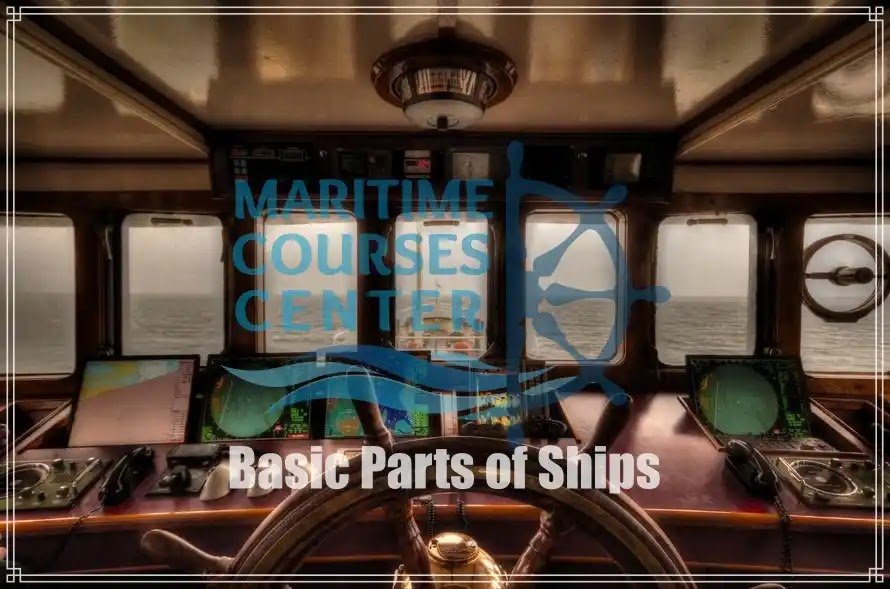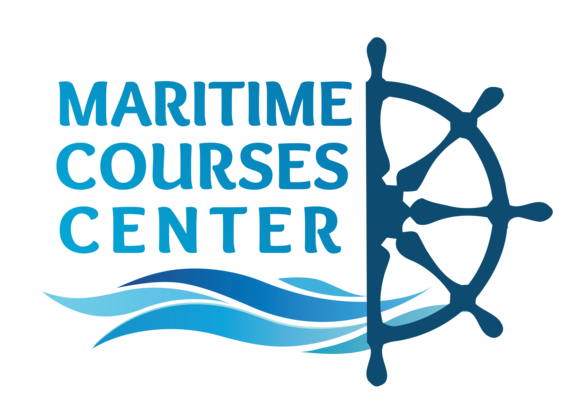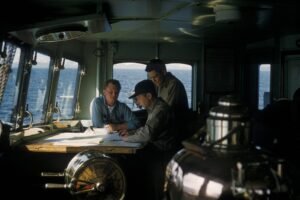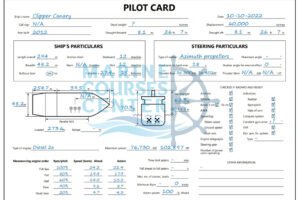
Basic Parts of Ships | seamanship | Basic Directions onboard ships | Basic Sections of the Ship | Categorizing Basic Types of Ships
2- Basic Parts of Ships
2.0 Introduction
We know that ships are built to serve as a transportation method for goods and Passengers over watery areas. So basically we need:
1- A place to store the goods inside it … (Hold for dry cargo or Tank for liquid cargo).
2- A place for crew or passengers to live in … (Accommodation). 3- Special place to fit the engines in it … (Engine Room).
It is understood that the ship will sail between different ports so we must consider:-1- Hydrodynamics and bouncy.
2- Special arrangements for loading and discharging cargo.
3- Safety of human life onboard the ship and thus ships must carry certain equipment for emergencies.
4- Main engine(s) for steaming and auxiliary machinery for other purposes serving the ship.
2.1 Basic Directions onboard ships
It must be understood that ships have special terminologies regarding all aspect; they differ than the terminology used other where. Such terminology should be fully memorized as it will be recalled when studying any subject related to maritime industry. shows simplified sketch with some terms related to directions that are used onboard ships.
Basic Sections of the Ship
The ship is a transportation method for cargo and/or passenger in addition to ship’s crew must arrive in good order, thus a ship must have the following sections.
2.3 Categorizing Basic Types of Ships
We know that:
1.Ships are built to serve for a certain purpose … this purpose will control the shape and the features of the ship.
2.Ships’ types can be sorted according to several criteria as follows:
•Types according to Method of Moving.
•Types according to Speed of Sailing.
•Types according to Range of Sailing.
•Types according to Type of Service.
2.3.1Categorizing Ships according to Method of Moving
1.Ships using Sail (Sailing vessel – sometimes called “Tall ship”)
Definition: Any vessel under sail providing that propelling machinery, if fitted, is not being used.
2.Ships using Machinery (Power driven vessel)
Definition: Any vessel propelled by machinery whatever the type of power used whether: Electrical, Diesel, Steam, Nuclear or whatever and can be distinguished from smoke emitting from funnel.
2.3.2Categorizing Ships according to Speed of Sailing
1.Normal speed ships
Usually ships don’t care much about speed (because of the resistance of water) so this is the normal and common situation for most of ships nowadays.
2.High Speed ships (sometimes called “High Speed Craft” or HSC)
This type is usually of non-displacement, less than 35 m in length and capable of steaming 25 knots or more. This type includes “Hover-Craft” as in Fig and “Hydrofoil” as in Fig.
2.3.3 Categorizing Ships according to Range of Sailing:
1- International voyages. These are the voyages of more than 600 nautical miles between the two ports.
2- Short International voyages. These are the voyages of less than 600 nautical miles between two ports providing that the voyage is within 200 nautical miles from nearest land.
3- Coastal voyages. These are the voyages with courses not more than 20 nautical miles from the nearest land.
4- Inland voyages these are the voyages commenced in waterways such as rivers, canals and lakes.
2.3.4 Categorizing Ships according to Type of Service:
This way of sorting depends mainly on the definitions given by different conventions and it could be seen as the most important methodology for sorting types of ships as it depends on the service provided by the ship, it also indicates the type of certificates required from the crew as seen in figure .
2.3.4.1 Military ships
These Ships seen in Fig (2-8) are owned by armies for military operations so they are behind the purpose of this course, usually they are:
•Painted in Grey colour
•Have no Plimsoll marks
•Usually they don’t write ship’s name.
The size of a military ship may vary according to type of vessel from small patrol boat to huge air craft carrier, and the speed varies from very high speed to medium speed. The crew should comply with military certifications.
2.3.4.2 Fishing ships
These are the ships used for catching fish, whales, seals, walrus or other living resources of the sea.
Such ship would be using any apparatus which restrict maneuverability, but does not include a vessel fishing using trolling lines or other fishing apparatus which do not restrict maneuverability.
They are divided as follows: –
•Fishing vessel using “net trawling”,
•Fishing vessel “not using trawling”,
•Fishing vessel using “purse sine” nets, and
•“Whale catching” ship
Usually fishing ships (Fig) are of small to medium size. The crew of these ships must comply with international convention on Standards of Training, Certification and Watch-keeping for Fisheries (STCW-F).
2.3.4.3 Merchant ships
These are the ships that transport passengers and/or cargo from place to place in return of freight. Merchant Ships can be divided into two main sub-categories as: –
•Passenger ships
which are classified according to the number of persons carried onboard and to the range of voyage
•Cargo ships
which are divided according to type of cargo been carried, and also range of voyage.
The crew of these ships must comply with international convention on Standards of Training, Certification and Watch-keeping for seafarers (STCW).
2.3.4.4 Ships providing services for other ships
These ships are considered sort of cargo ships and usually they are (Fig ) of small to medium size, they provide services for other ships (such as tug boats and pilot ships) and they are usually seen within ports or approaches. The crew of these ships must comply with international convention on Standards of Training, Certification and Watch-keeping for seafarers (STCW).

















